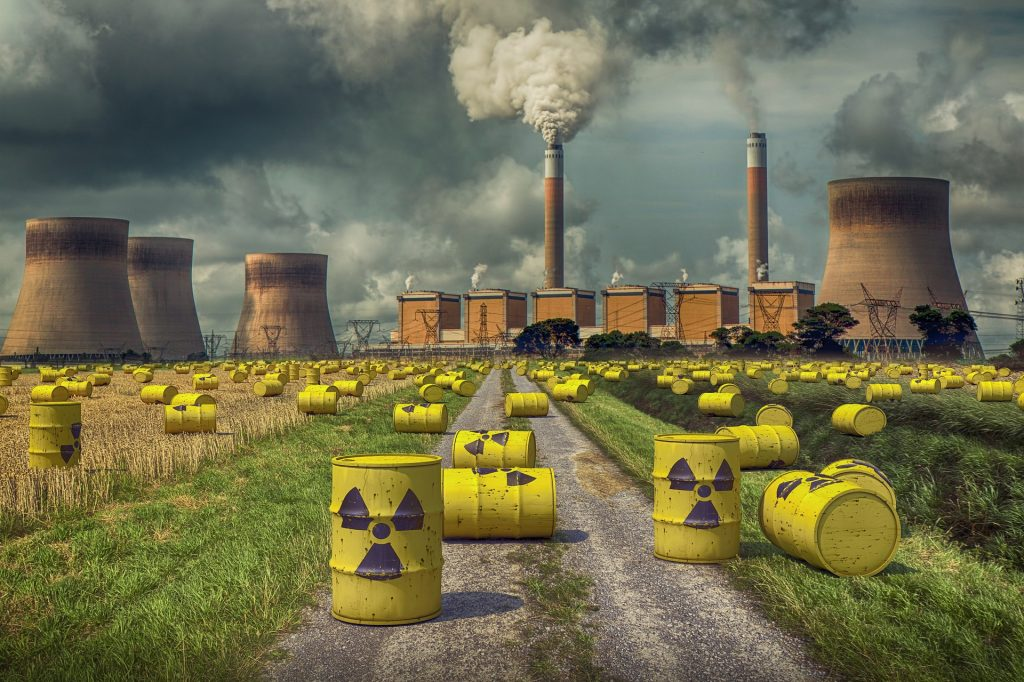News Highlight
Emerging hazard: Radioactive contamination is increasingly found in scraps for recycling, says the UN body.
Key Takeaway
- According to annual data on illicit nuclear trafficking, radioactive materials or tainted equipment are entering the thriving scraps recycling cycle, posing a serious health risk.
- Other radioactive materials are released by the International Atomic Energy Agency (IAEA), a self-contained agency within the United Nations system.
- The most recent data was obtained from the IAEA Incident and Trafficking Database (ITDB).
- Instances of unlawful trafficking of nuclear and other radioactive materials under or out of regulatory control are reported by 143 member nations and international organisations.
- This is part of the International Atomic Energy Agency’s Nuclear Security Plan.
- The IAEA does not divulge specific incidents to the public and instead shares broad patterns from annual reporting by participating members.
Radioactive Waste and Pollution
- About
- Radioactive pollution is the poisoning of water and air by radioactive materials.
- If radioactive waste is not properly disposed of, it might cause dangerous pollution.
- The earth’s crust contains naturally occurring radioactive materials.
- Three NORM (Naturally Occurring Radioactive Materials) series contaminate water resources: uranium, thorium, and actinium.
- A limited quantity of radiation is present in all forms of water, but excessive radiation is hazardous to human health.
- Radioactivity is measured in Becquerels or Curies.
- The Sievert unit quantifies the amount of radiation absorbed by human tissues.
Radiation
- About
- Radiation is energy that emanates from a source and travels through space at the speed of light.
- This energy is wave-like and is accompanied by an electric and magnetic field.
- Background radiation is a form of radiation that is always present in all living organisms.
- When radioactive radiation exceeds a particular threshold, biological creatures are harmed.
Sources of Radioactive Pollution
- Exposure to Cosmic Radiation
- The earth’s outer atmosphere is constantly bombarded by cosmic radiation.
- Cosmic radiation comprises fast-moving particles in space that can originate from various sources.
- It includes the sun and other celestial phenomena.
- Most cosmic rays are protons but can also be other particles or wave energy.
- Terrestrial Radiation
- The Earth itself generates terrestrial radiation.
- Soil and rock contain naturally radioactive elements.
- The primary sources are natural stocks of uranium, potassium, and thorium.
- It emits small amounts of ionising radiation during natural decay.
- Uranium and thorium are “ubiquitous,” meaning they can be found nearly wherever.
- Nuclear Power Plants
- The nuclear fusion process in nuclear power plants is the primary source of radioactive waste.
- These procedures produce radioactive wastes such as uranium mill tailings, spent reactor fuel, and other radioactive wastes.
- They pose a significant environmental risk linked with nuclear power facilities.
- These elements can remain radioactive for thousands of years and are hazardous to human health.
- Nuclear Waste Handling and Disposal
- Over time, nuclear waste treatment and disposal can result in low to medium quantities of radioactivity.
- Radioactivity can pollute and spread throughout the environment, including the air, water, and soil.
- As a result, their consequences may be difficult to recognise and predict.
- Furthermore, specific nuclear waste disposal locations may go undiscovered.
- The major issue with radioactive waste is that it cannot be chemically or biologically destroyed.
Measures to Control Radioactive Pollution
- Proper Method of Disposing of Radioactive Waste
- Radioactivity is still present in radioactive waste.
- As a result, it cannot be discarded in the same way conventional waste can.
- It cannot be buried or burned.
- Due to the danger of seepage, this waste should be stored in big, thick concrete containers.
- Because storage may not be feasible, another option is to dilute the radiation.
- Proper Labeling
- Any radioactive material must be labelled with the necessary precautions mentioned on the label’s content.
- This is because even minor interactions with radioactive material might allow radiation to enter the body.
- Such items should be prominently labelled in containers to urge the use of protective equipment when handling them.
- Prohibition of Nuclear Tests
- Any radioactive material must be labelled with the necessary precautions mentioned on the label’s content.
- This is because even minor interactions with radioactive material might allow radiation to enter the body.
- Such items should be prominently labelled in containers to urge the use of protective equipment when handling them.
Conclusion
- Controlling radioactive pollution is critical at individual and governmental levels.
- Using radiation protection, correct labelling, and suitable storage and disposal are just a few examples.
- All places that use potentially hazardous levels of radioactive material require additional security measures immediately.
- Through research programmes and incentives, the greatest preventive approach to dealing with this type of pollution may accelerate the development of low-cost substitutes for radioactive materials in various applications.
Pic Courtesy: Education Dazzle
Content Source: Down to Earth



